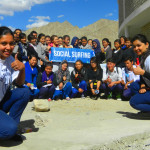In a sphere where feminists are raising voices in every corner and struggling to attain gender equality, how far has online misogyny been addressed? From abortion and female infanticide to sexual harassment, rape and dowry, women have lived under the garb of the inherent patriarchal society, conforming to all norms and structures till now.


Society has seemed to come a long way from the first wave of feminism to the third wave. However, what was different in the first and second wave of feminism was that it did not have to deal so much with the cyber violence that women today face on a daily basis. It was been seen by the Battered Women’s Support Services that the use ofinformation and communication technologies has been used as a weapon against women.
The internet and social media have also become an environment where women feel unsafe and threatened. The social media platforms like Facebook, Twitter, Linkedin, YouTube, work as a catalyst, promoting violence against women. Internationally, it was seen that more than 200,000 aggressive tweets using the same words were sent to 80,000 people in the same period – and according to the study, more than half of the offenders were women. Misogyny is so deeply rooted in India’s collective psychology that even the bureaucracy and administration, that work for the welfare of the society, have made endless derogatory remarks about women and women’s safety.


When everything happens through the internet and technology, online misogyny is bound to persist. Since the inception of the internet, the anonymous nature of it has only encouraged sexual exploitation and humiliation. From being threatened to removing clothes in front of the webcam or being forced to sex chat for reasons such as revenge or revealing something, the space for women online has only been become more precarious. This also contradicts the very fact that feminist has been going above and beyond their capacity to protect the rights of women offline by creating awareness online through articles and blog posts but have been unable to capture cyber-violence in its true sense.
The technology has become so widespread and viral, that the damage done through social media by using comments and objectifying women can almost never be handled. Even though Facebook and similar platforms claim to have increased their privacy settings and attempt to make every user safe, there is paranoia on how much of those settings help. The main audience that falls prey to this is perhaps the youth. When online dating and chatting has become so common with an increased sense of identity online, the sense of insecurity prevails.
This brings a larger question to grapple with-What needs to change to eliminate cyber violence against women and make online spaces safer for women? Digital spaces are essential areas to participate for giving their input at work, politics and social commitment, which makes it urgent for women to advocate their right to communicate on the internet, to create gender-just online spaces. Also, what is really needed is a complete shift in societal views of cyber violence against women and support from the family and community. Every country has a way of dealing with cyber violence and India does need stringent laws and actions to be able to bring about a real change.
To bring about a real change it is important that campaigns are formed and petitions are signed that spread awareness about online violence. Campaigns like #SochKeBol helps in making people understand the intensity to which their comments and remarks can affect the society.
Sources:
http://www.bwss.org
https://www.theguardian.com
About the Author
Prashasti Arora is currently pursuing a degree in Journalism and Mass communication at Lady Shri Ram College for Women. In her words “I am inclined towards writing, editing and like upgrading my skills that help me grow both personally and professionally. I like interacting and brainstorming with people to come up with ideas and discussions worth the time and effort.”


Looking forward to reading your blogs, you can mail us your entries at WriteWithUs@csrindia.org, or upload them at Write With Us.
Discuss this article on Facebook





